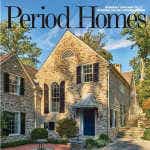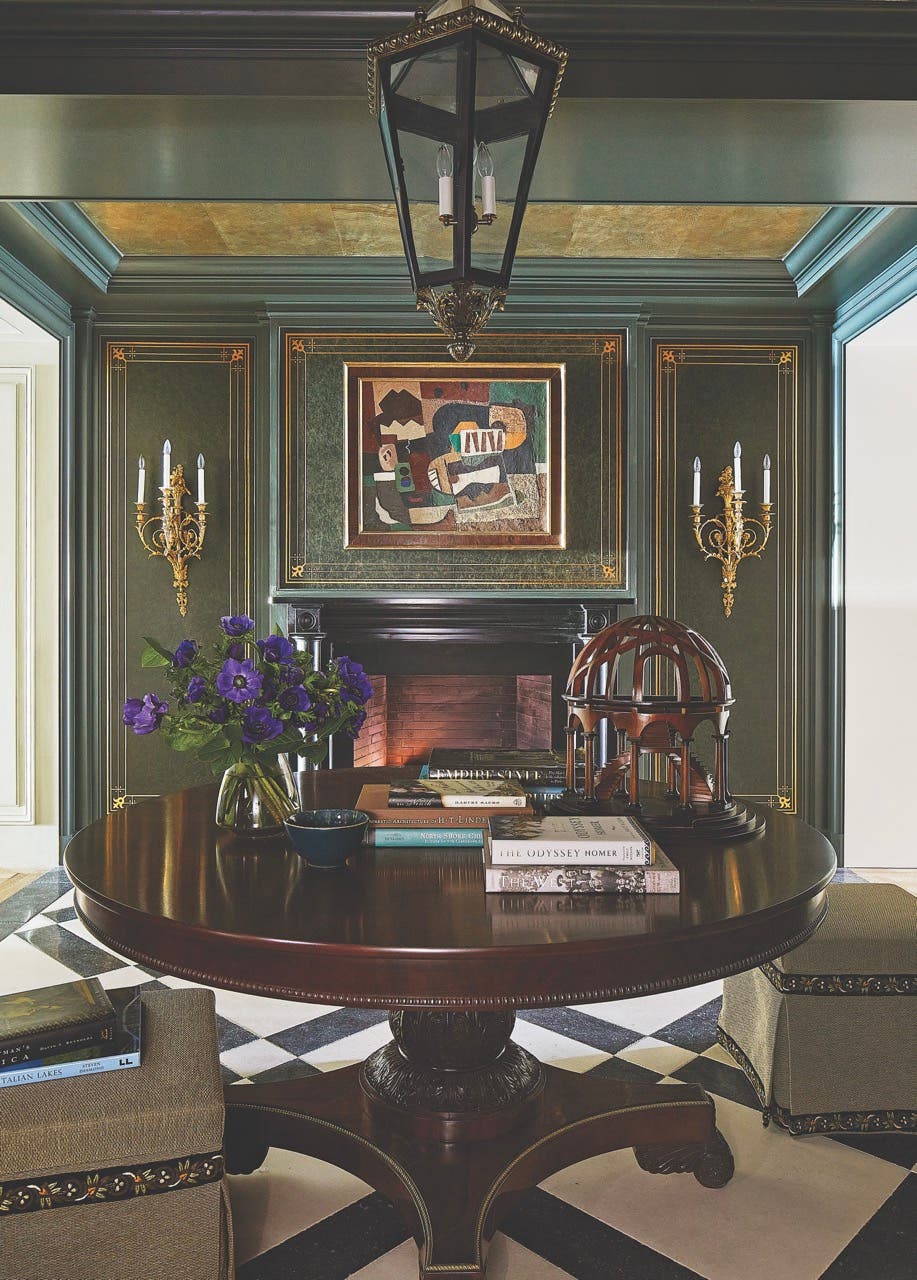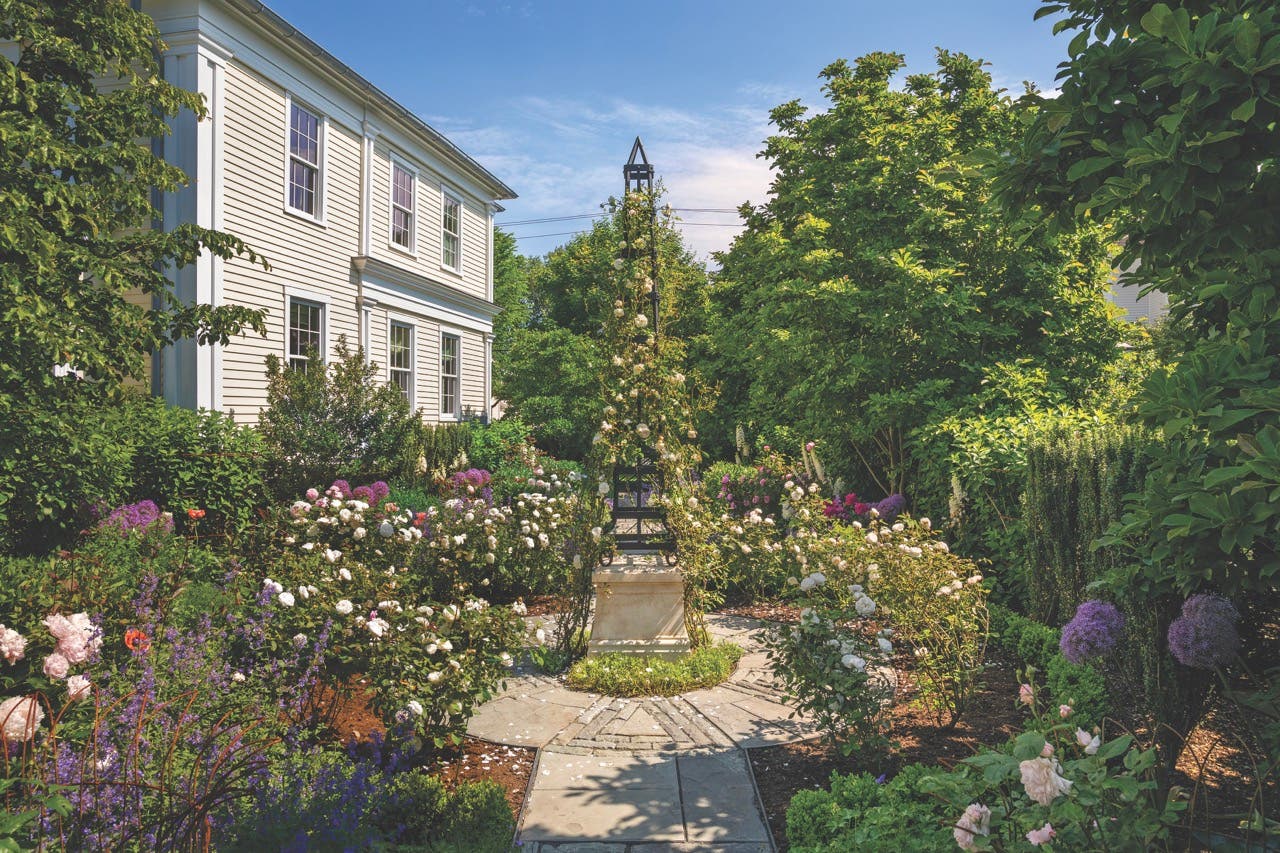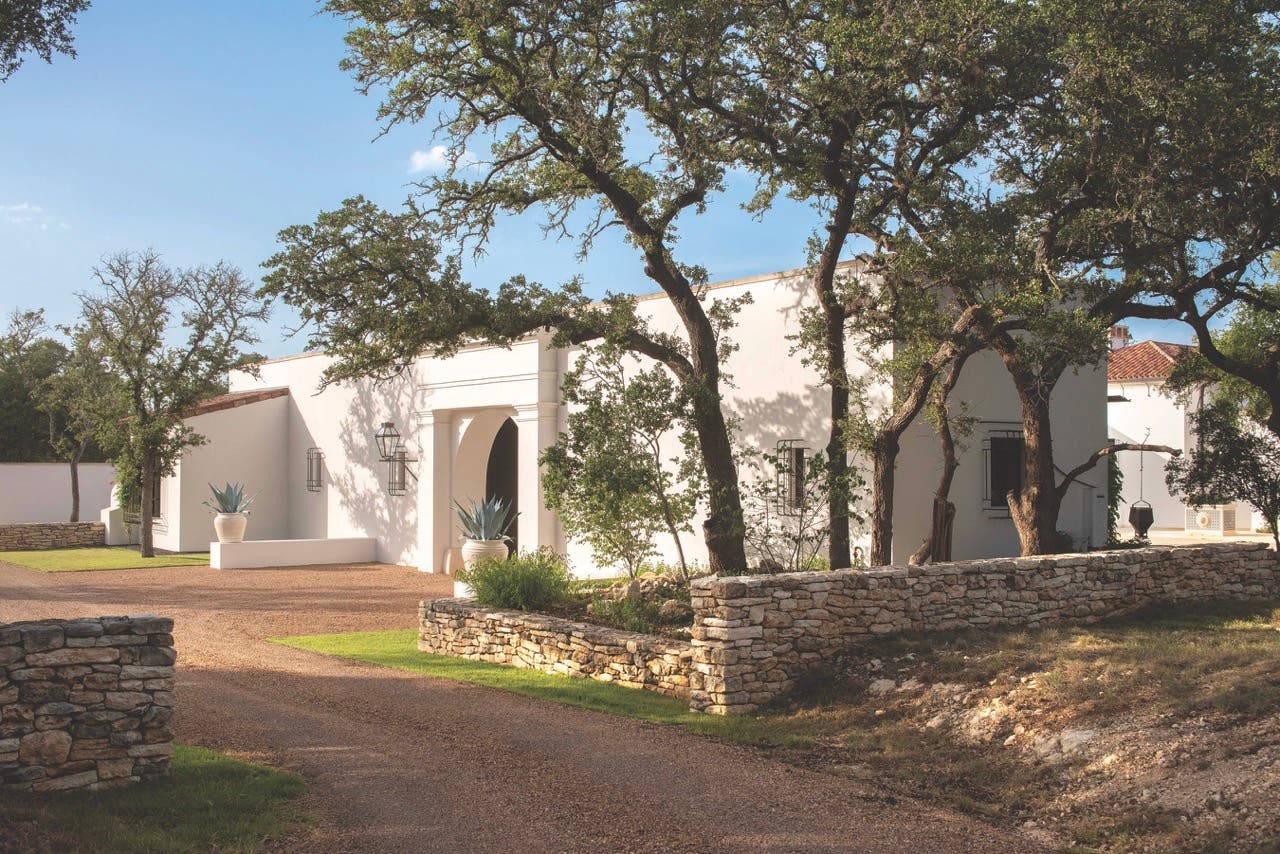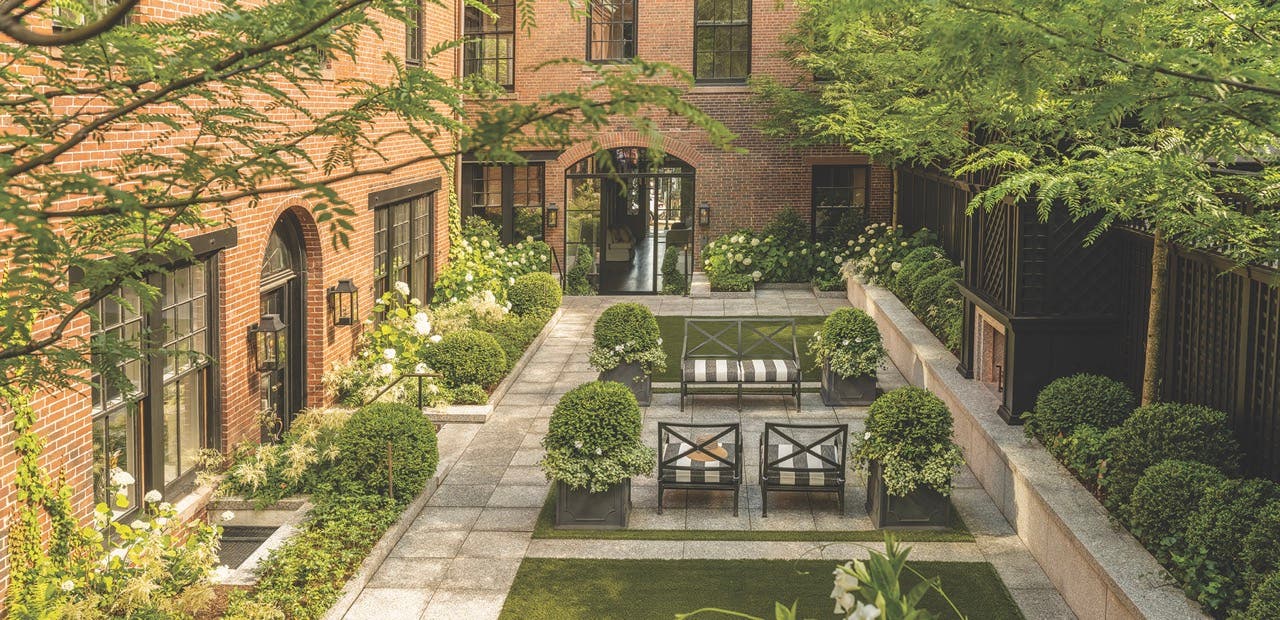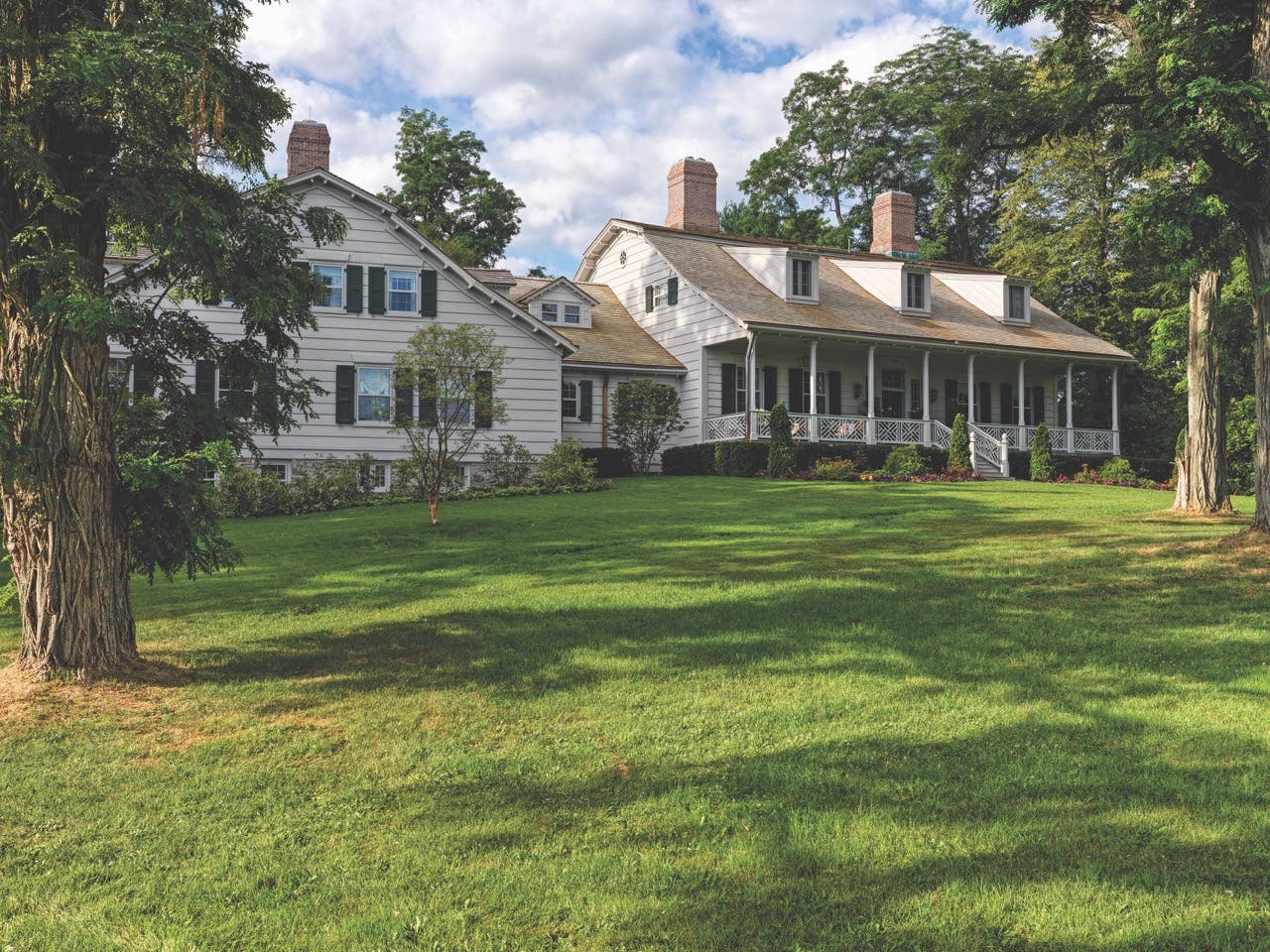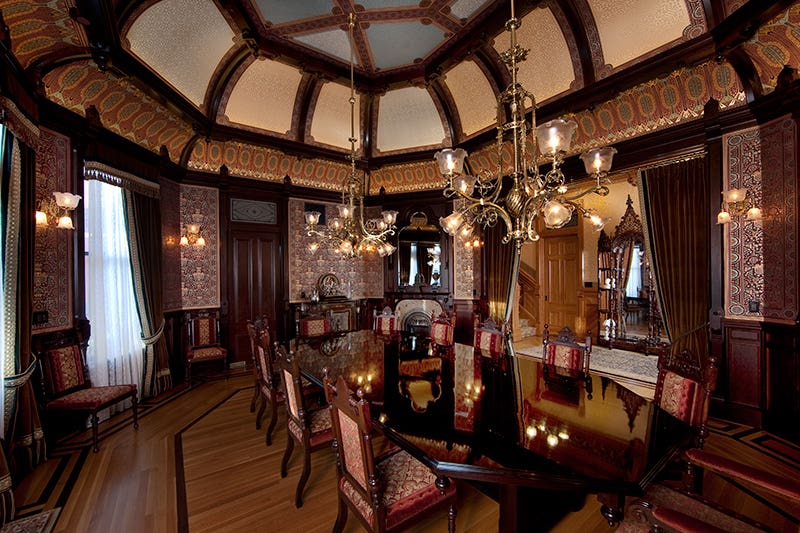
Palladio Awards
The Restoration of the Historic McDonald Mansion
2013 PALLADIO AWARD
Restoration & Renovatio
Winner: Rynerson & O’Brien Architecture & Paul Duchschere
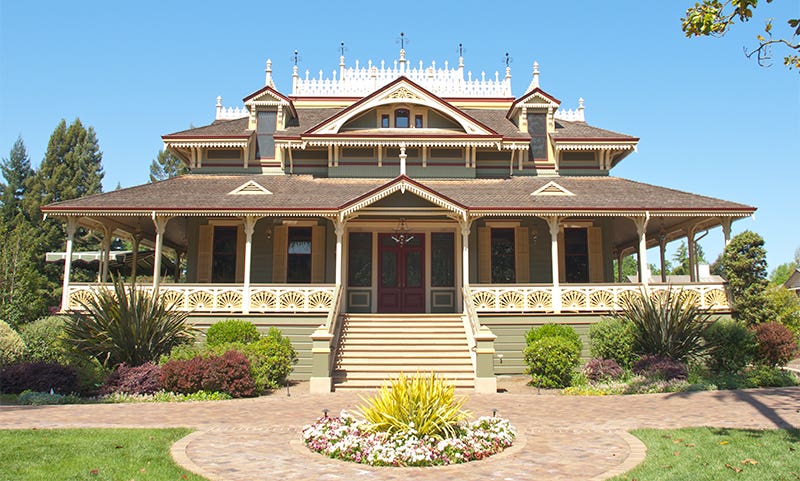
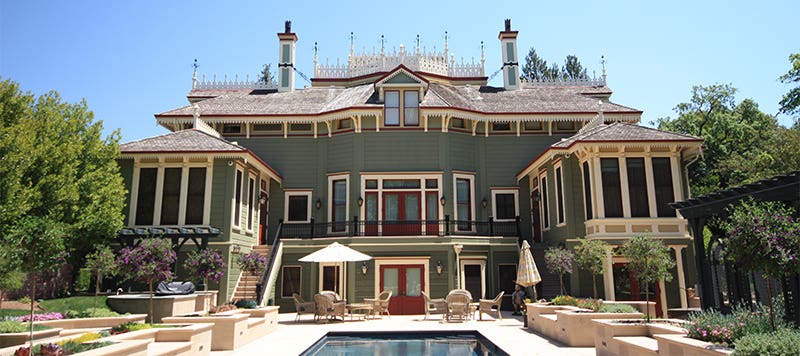

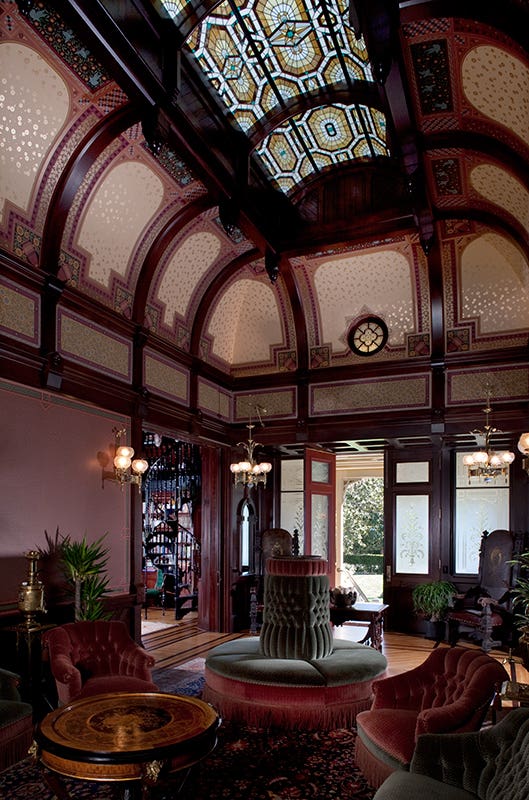
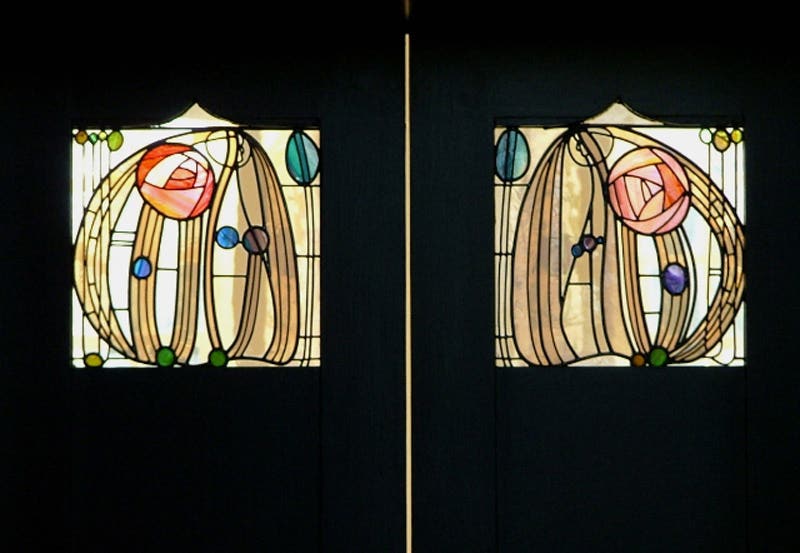



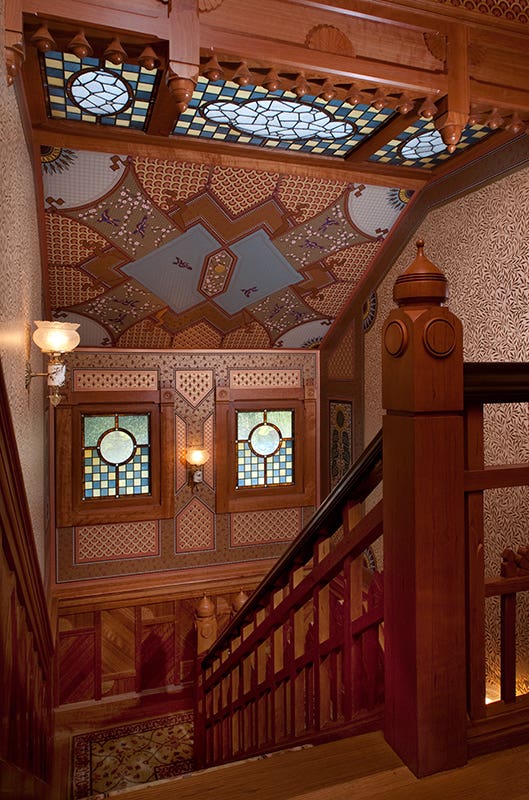
By Annabel Hsin
In the late 1860s, Col. Mark L. McDonald purchased 160 acres of land in the small town of Santa Rosa, CA, to develop an upscale residential neighborhood that appealed to the business and professional elites of the time. On a prominent corner lot on McDonald Avenue, he built the McDonald Mansion, originally known as Mableton, which was modeled after raised Southern cottages in the Stick-Eastlake style. He used it as a summer home for his family and also as a show house for his new development, called McDonald’s Addition. McDonald Avenue became the address of choice for the city’s most prominent citizens and today it is part of the McDonald Historic District.
Project: McDonald Mansion, Santa Rosa, CA
Architect: Rynerson & O’Brien Architecture, Oakland, CA; Stephen Rynerson, principal
Design Consultant: Paul Duchscherer, San Francisco, CA
General Contractor: Masters Touch Construction, Santa Rosa, CA
The McDonald Mansion stayed in the family for nearly a century but by the last generation, it was left in disrepair. After the death of McDonald’s granddaughter, the last surviving heir, the property was willed jointly to the University of California and Stanford University. Eventually, the house and grounds were offered for sale to the city and faced possible demolition.
In 1974, a local doctor saved the property by purchasing it with the intention of restoring the old house. Unfortunately, a fire that occurred during the restoration process destroyed most of the roof, the second floor rooms and the previously intact original main hall ceiling and skylight. The house was rebuilt in its original form, but much of the ornamental details and trim were gone.
When the property was once again available on the market, it was acquired by the current owners who wanted to restore the house back to its former glory. They entrusted the task to historic design consultant Paul Duchscherer and Oakland, CA-based Rynerson & O’Brien Architecture. “The clients didn’t have a lot of background in Victorian architecture but they knew the house wasn’t quite right,” says Duchscherer. “When you look at the house, it seemed like pieces were missing on the exterior.
Inside, many of the rooms had a vague identity. The previous owner had left the central space open to the roofline where there were large contemporary skylights; the space had distorted proportions because the secondary ceiling was missing. The second floor was also opened up for balcony-like railings. It didn’t feel like the house you might imagine when you saw it from the street. The clients simply asked us to make the interior live up to the promise of the exterior, which was in essence our design approach.”
After months of research, it was determined that the time frame for the restoration period should be when the house was built in 1879 through the following decade. “We primarily looked at photographic images to confirm if what we had in an artist’s lithograph from 1882 was correct,” says Stephen Rynerson, principal. “One of the breakthrough events was when we found a photo at the California Historical Society from the early-20th century that confirmed the exterior appearance. Many portions of the house had been the same as depicted in the 1882 lithograph but there had been additions made during the Victorian period that corresponded to the form we see today. We needed that photo to confirm how the house should look on the exterior.”
The main detail that was missing from the exterior was a two-tiered roof cresting. Unlike most traditional cast-iron cresting, these pieces were made of wood with the end grains exposed to the elements. In place of wood, the design team selected a PVC-based material manufactured by Scranton, PA-based AZEK. The cresting is attached to a steel structure that parallels a walkway. The outer level incorporates a handrail while the inner level conceals a skylight and mechanical equipment. “The cresting is a character-defining element,” says Rynerson. “It is robust enough to be part of the massing and it completes the pyramidal forms created by the lower roof areas.”
Additional alterations to the exterior included the replacement of fiber cement roofing with bands of patterned cedar shingles. The main gable on the front façade is restored with a pierced bargeboard and a trio of small windows. The flat, sawn Stick-Eastlake trim was replaced as needed. On the veranda, inappropriate skylights were substituted with gabled dormer vents, and Brazilian redwood and Cumaru with boat-deck caulking were installed as flooring. Stairs on the south façade were rebuilt, as were the front steps, which were constructed using golden earth sandstone in place of wood treads and risers. The palmate veranda railings were extended to the stairs and culminate in square newel posts. A new six-color historic paint scheme finishes the exterior.
At the rear, haphazard later additions were demolished for two new wings and new connections between house and garden were established. “The back of these old houses oftentimes were not very well connected with the rear yard,” says Rynerson. “The formal garden and the front presentation to the street were primary in the designer’s mind. The rear of the house, the floor plan and the utility use of the rear yard just weren’t as well thought out. The two wings that we added – one contains a small family room, kitchen and breakfast room, and the other for the master bedroom suite – are subordinate in scale to the main structure.”
Duchscherer adds that the additions form a U-shape with the house, creating a courtyard that screens the private entertainment spaces from the street. A terrace at the main level is flanked with a pair of stairs that lead to the rear yard, where a new in-ground pool is surrounded with stone elements that reinforce the existing strong axis of the house. “The main axis runs through the house and pool and ends with a curving pergola,” he says. “A cross axis runs from the formal parterre gardens at the south, where we added a greenhouse, to a new arbor and built-in seating arrangements around the pool. There is a prevailing sense of order and relationship between the areas, even though each is distinctly separate.”
To continue the symmetry at the front gardens, a central gate, pedestrian walkway and a water fountain on axis with the home’s front entrance were created. The original entry doors, accompanied by new wheel-cut sidelights and encaustic floor tile, open to the interior main hall. Important features include a 20-ft.-long arched leaded art-glass lay light, coved panels of wallpaper framed with mahogany trim, moldings and corbels, period-style chandeliers, a fireplace and a musicians’ gallery. Pocket doors on either side of the hall lead to four Victorian-themed parlors.
The northeast parlor is designed as a library with floor-to-ceiling bookcases accessed by a cast-iron catwalk with glass floors. Narrow spiral stairs lead to a private map room at mezzanine level located above the vestibule. Opposite the library, a Turkish parlor (often referred to as the “smoking room”) was conceived in the Moorish Revival style. Its 16-ft.-high ceiling, typical throughout the first floor, takes the form of a domed octagonal pavilion that rests on pierced screens, lobed horseshoe arches and slender columns of ebonized oak.
The two rear rooms are designed as ladies’ and gentlemen’s parlors. The former contains delicate French Revival details and a lighter color scheme; its 10-ft. “slip-head windows,” which retract into the upper wall, were fully restored, as were those in the other parlors, to create doorway-like access to the veranda. The latter has masculine Gothic Revival features. The oak coffered ceiling of chamfered beams was grained to match the room’s millwork and wainscot, the latter of which was adapted from a period example by English architect William Burges. “The themes in the parlors were developed independently and thoroughly, from the forms of the room through the millwork to the wallpaper patterns and wood species,” says Rynerson. “We didn’t just change the paint colors from one room to another.”
Beyond the main hall and parlors, the stair hall and dining room received the same level of attention. “The Anglo-Japanese scheme for the stair hall was inspired by detailing found on the original stair railing,” says Duchscherer. “The hall’s linear space and high ceiling was tackled by using a series of squared coffers that allowed for dropped beams and decorative trusses. When viewed from the stairs or in the parlors, the ceiling is a complex repeating theme that is reminiscent of Steamboat-Gothic style with its repeating cut, sawn ornaments.
“We manipulated the shape of the dining room by clipping the two inside corners to reflect the outer shape that was originally there,” says Duchscherer. “We ended up with a stretched octagon and we created a two-level ceiling cove that almost looks like an inflated tent. That gave the room a distinctive and elaborate scheme, second only to the main hall.”
As with the exterior, the interiors of the additions are subordinate to the formal spaces. The north wing’s breakfast room, kitchen and family room contain lower ceilings and are detailed with quarter-sawn oak in Eastlake style. Finished in maple with birds-eye maple panels and barrel-vaulted ceilings, the master suite wing is designed in an English Arts and Crafts theme of the early-20th century; it is the one departure from the time frame of the restoration. Upstairs, a single millwork package is used throughout the bedrooms, which vary in color palette and wallpaper.
The original basement contained 7-ft. ceilings, which necessitated additional excavation and a 40-ft. steel beam to support the north wall for a new three-car garage. Closely related to the layout of the main floor, the basement now houses the caretaker’s apartment, mudroom, wine cellar, garden room and a bathroom for the pool, all of which surround a secondary family room and theater area. Adjacent to the garage are storage areas and a new elevator.
Additional materials for the project include: Warroad, MN-based Marvin Windows and Doors; St. Louis, MO-based Unico (high-velocity HVAC); San Rafael, CA-based McNear Brick and Block (pavers); San Francisco, CA-Cirecast (exterior door hardware); Port Townsend, WA-based Vintage Hardware & Lighting (interior door and window hardware); Brisbane, CA-based Integrated Resources Group (interior marble and granite); New York, NY-based Ann Sacks Tile & Stone; San Francisco, CA-based Lorna Kollmeyer Ornamental Plaster; Benicia, CA-based Bradbury & Bradbury Art Wallpapers; Grass Valley, CA-based Quality Lighting; and Coopersburg, PA-based Lutron (lighting controls). Rynerson O’Brien Architecture and Duchscherer are both members of Artistic License, a guild of restoration and period revival artisans, many of whom participated in the project.
After a five-year design and restoration process, the McDonald Mansion is now living up to its legacy as the premier home on the main thoroughfare of the McDonald historic district. Its interiors have not only been restored, but they have also been elevated to a higher style. “We really felt fortunate to be involved in a project like this and to have clients with the vision and perseverance to see this happen,” says Rynerson. Duchscherer adds, “this is a once-in-a-lifetime project and I consider it my opus.”

